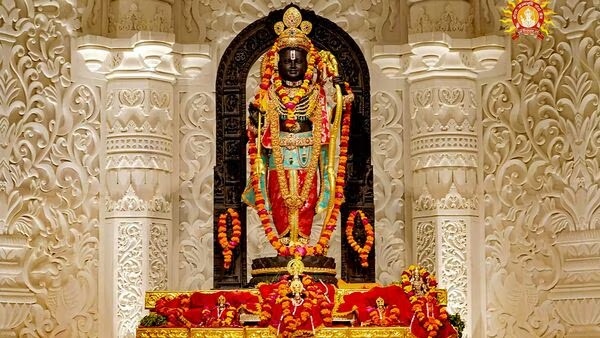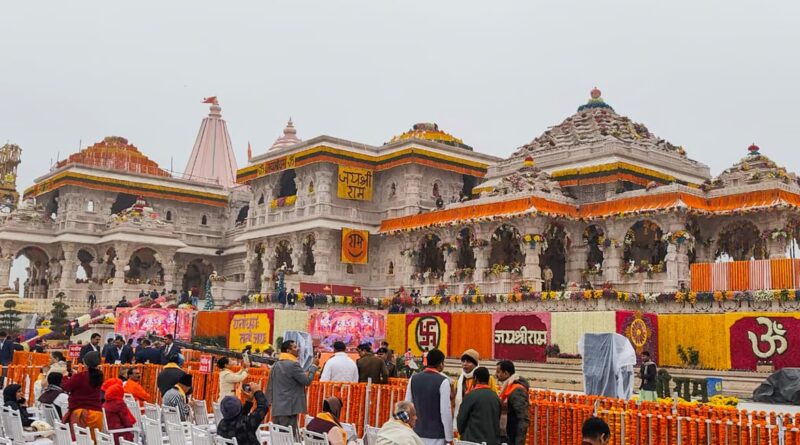The Significance of Ayodhya Ram Mandir
The Ayodhya Ram Mandir holds immense significance in the hearts and minds of millions of people around the world. This holy temple, dedicated to Lord Rama, is not only a place of worship but also a symbol of cultural and religious heritage. Let us explore the rich history and the profound significance of the Ayodhya Ram Mandir.
Historical Background
Ayodhya, located in the state of Uttar Pradesh, India, is believed to be the birthplace of Lord Rama. The epic Hindu scripture, Ramayana, narrates the story of Lord Rama’s birth and his divine mission to restore righteousness on Earth. According to the Ramayana, Lord Rama ruled Ayodhya as a just and benevolent king.
In the 16th century, the Mughal emperor Babur constructed a mosque known as Babri Masjid at the site believed to be Lord Rama’s birthplace. This led to a centuries-long dispute between Hindus and Muslims over the ownership and control of the site. The Ayodhya Ram Janmabhoomi-Babri Masjid dispute became a contentious issue, eventually leading to the demolition of the mosque in 1992.
Religious Significance
The Ayodhya Ram Mandir holds immense religious significance for Hindus. It is believed to be the birthplace of Lord Rama, one of the most revered deities in Hinduism. Lord Rama is considered the seventh avatar of Lord Vishnu and is revered as the epitome of righteousness, courage, and devotion.
For millions of devotees, the temple is not just a physical structure but a sacred place where they can connect with the divine. It serves as a pilgrimage site, attracting devotees from all over the world who come to seek blessings and offer their prayers to Lord Rama.
The construction of the Ram Mandir in Ayodhya is seen as the fulfillment of a long-awaited dream for Hindus. It represents the restoration of their cultural and religious heritage, as well as a symbol of unity and harmony.

Cultural Significance
The Ayodhya Ram Mandir is not only a religious symbol but also a cultural landmark. It represents the rich cultural heritage of India and the deep-rooted traditions that have been passed down through generations.
The temple’s architecture is a blend of various styles, reflecting the diverse influences that have shaped Indian culture over the centuries. The intricate carvings, ornate pillars, and majestic domes are a testament to the skill and craftsmanship of the artisans who built the temple.
The construction of the Ram Mandir is seen as a celebration of India’s cultural identity and a reaffirmation of its ancient roots. It serves as a reminder of the country’s glorious past and the values that have guided its people for centuries.
Social Significance
The Ayodhya Ram Mandir holds immense social significance, as it has been a focal point of a long-standing dispute between Hindus and Muslims. The construction of the temple is seen as a step towards healing the wounds of the past and fostering communal harmony.
It is a testament to the resilience and spirit of the Indian people, who have come together to resolve a contentious issue through peaceful means. The Supreme Court’s verdict in 2019, granting the site to Hindus for the construction of the Ram Mandir, was hailed as a landmark moment in India’s history.
The Ayodhya Ram Mandir stands as a symbol of unity, reminding us of the power of dialogue, understanding, and mutual respect in overcoming differences and building a harmonious society.
Conclusion
The Ayodhya Ram Mandir is not just a temple; it is a testament to the faith, culture, and history of millions of people. It represents the deep-rooted spiritual connection that people have with Lord Rama and serves as a beacon of hope and unity.
The construction of the Ram Mandir in Ayodhya is a significant milestone in India’s journey towards preserving its cultural and religious heritage. It is a reminder that despite our differences, we can come together to build a better future based on mutual respect and understanding.
As the Ayodhya Ram Mandir stands tall, it continues to inspire people to embrace their cultural and religious identities while promoting peace, harmony, and inclusivity.



